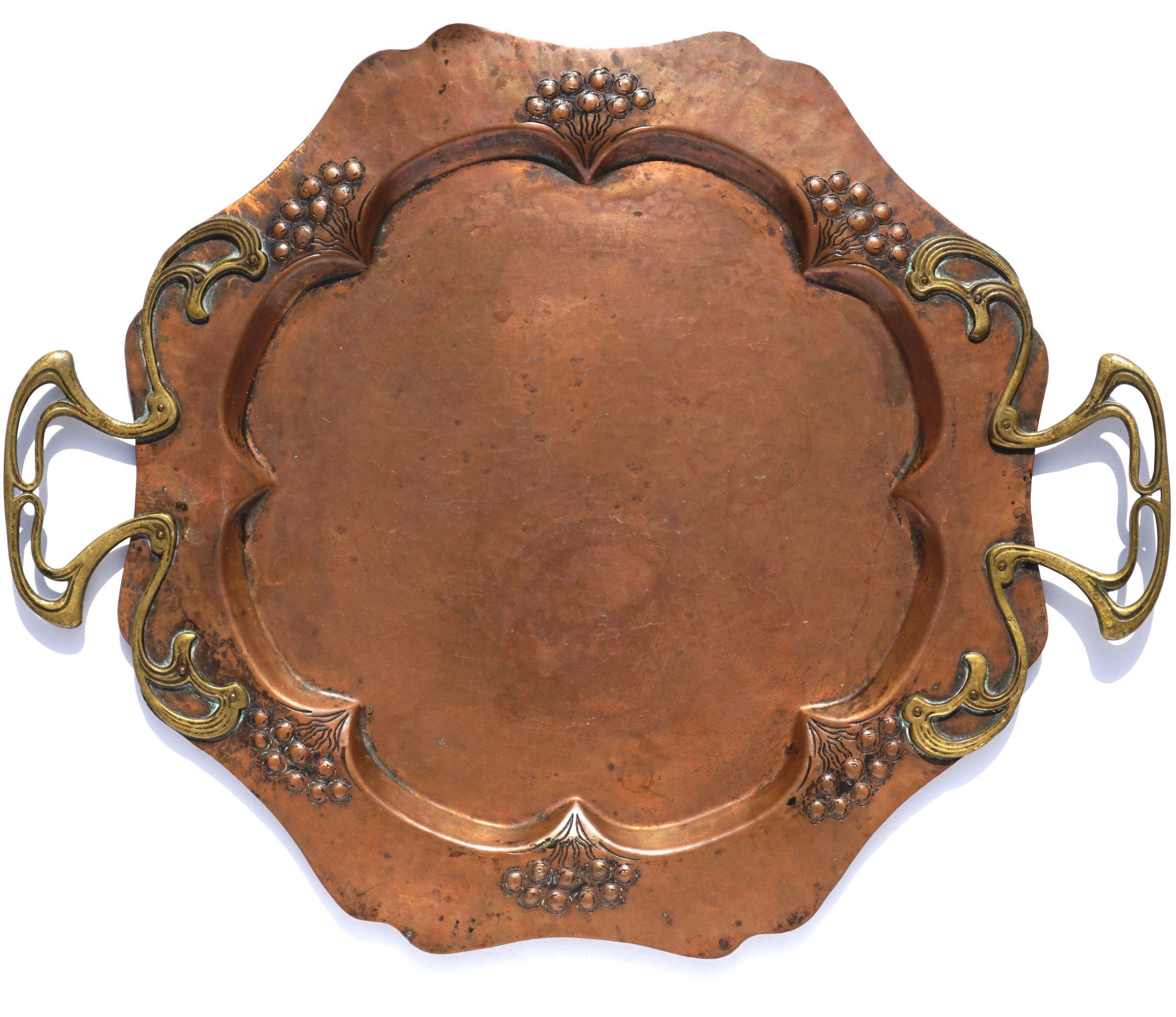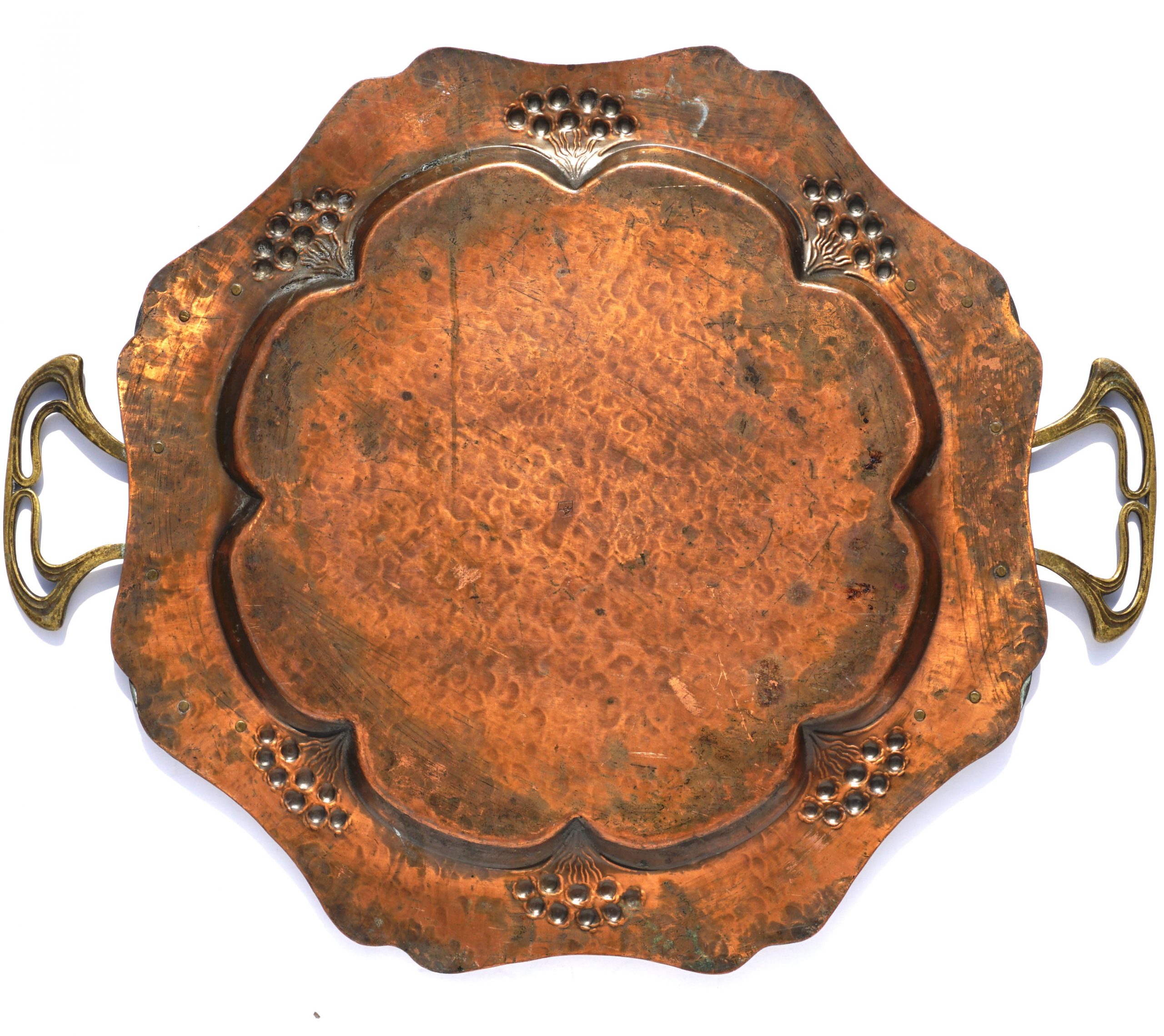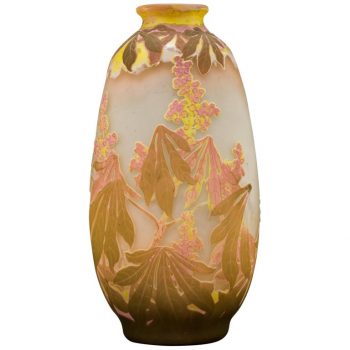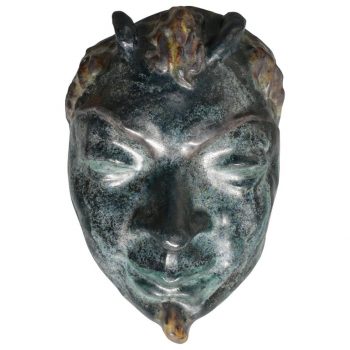Description
WMF Würtemburgische Machin Fabrik AG
A wonderful Art Nouveau Jugendstil hand-hammered copper and brass serving tray, circa 1905.
Measures: Width 19 inches Height 15 inches
Ostrich in diamond impressed mark on back.
Condition: Wear commensurate of age and use.
In 1880 after Metallwarenfabrik Straub & Schweizer merged with another German company, it was renamed as the Württembergische Metallwarenfabrik. WMF acquired the Polish metalware factory Plewkiewicz in Warsaw in 1886, which then became a subsidiary of WMF, circa 1900. During this period, the WMF employed over 3500 people. In 1890 they acquired the Kunstanstalt für Galvanoplastik München, which specialized in electrotyping and electroforming of statues and statuettes for buildings, fountains, tombstones, and gardens; this became the Abteilung für Galvanoplastik (Galvanoplastic Division) of WMF. During the 1920s, Abteilung für Galvanoplastic was producing reproductions of large-scale Italian Renaissance bronze works for an American clientele. Albert Weiblen Marble & Granite Co., Inc. of New Orleans pursued the acquisition of a gilt copper reproduction of Ghiberti’s “Gates of Paradise”.
In 1910, the Reale Istituto di Belle Arti had granted WMF the exclusive right to take a sharp cast of the original doors, from which WMF created a reproduction that was exhibited at the International Building Trades Exhibition in Leipzig (1913). WMF produced a trilingual catalog about the doors, titled Erztüre des Hauptportals am Baptisterium in Florenz. In 1900, WMF acquired Albert Köhler’s famous Austrian metalwork company AK & Cie, who produced and distributed WMF items under their mark to the Austria-Hungarian market until, circa 1914. WMF purchased Orivit AG, a company known for its Jugendstil pewter in 1905, followed a year later by the purchase of the Orion Kunstgewerbliche Metallwarenfabrik, another German metalware company. WMF continued to use the goods from the acquired companies on their own markets, and conversely, they produced and distributed their objects under their acquired companies brands. One other brand they acquired was Radivon Bucarest, a company founded by medalist Theodor Radivon, producing identical Art Nouveau metal wares under the WMF name with the same model numbers.
In 1955, WMF started production of commercial coffee machines. These products were designed for restaurants, military mess halls, cruise ships and other commercial applications.











